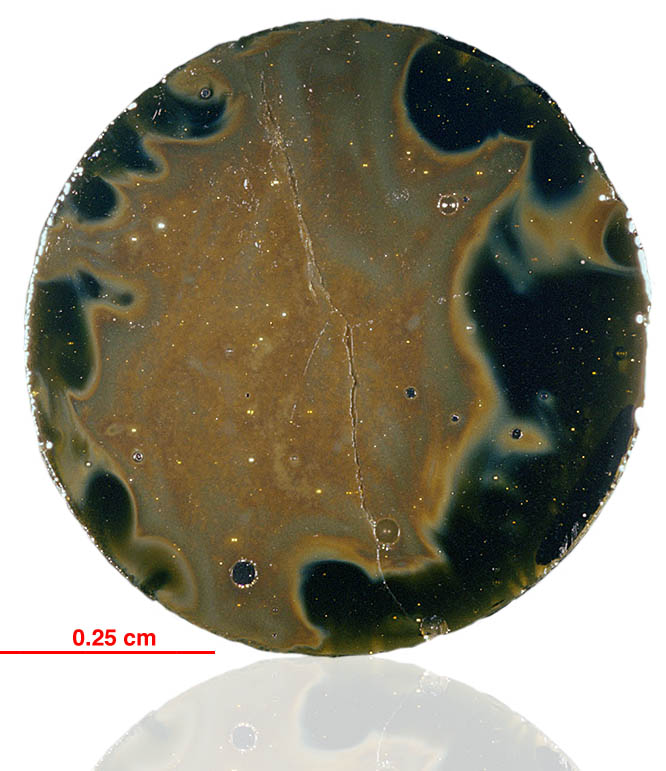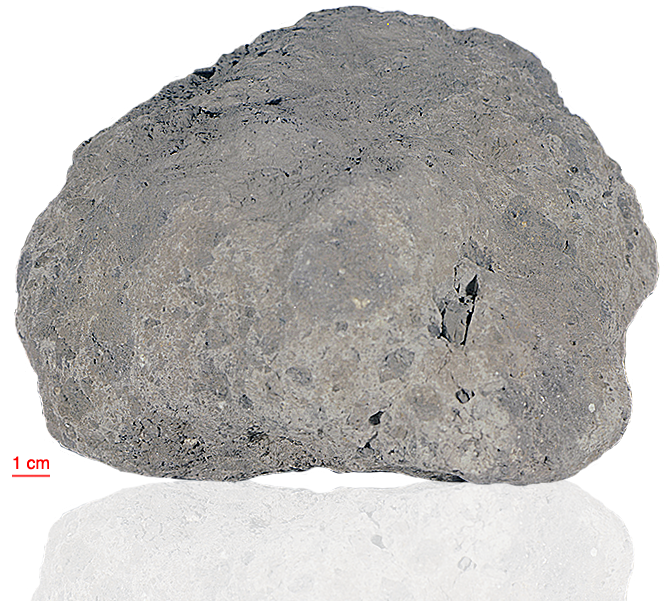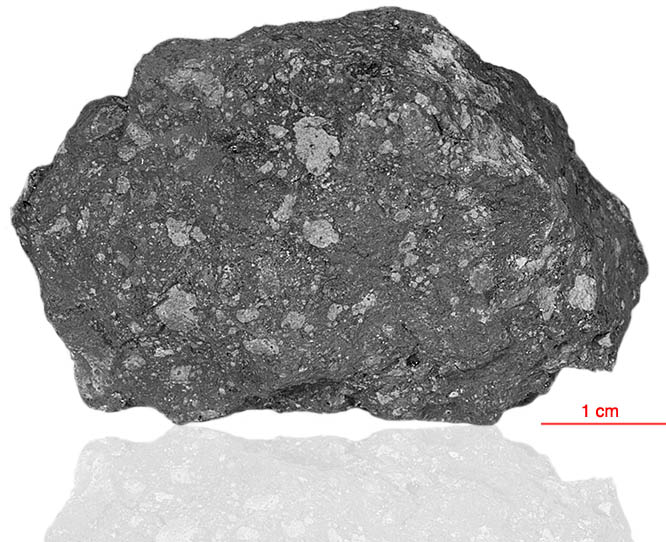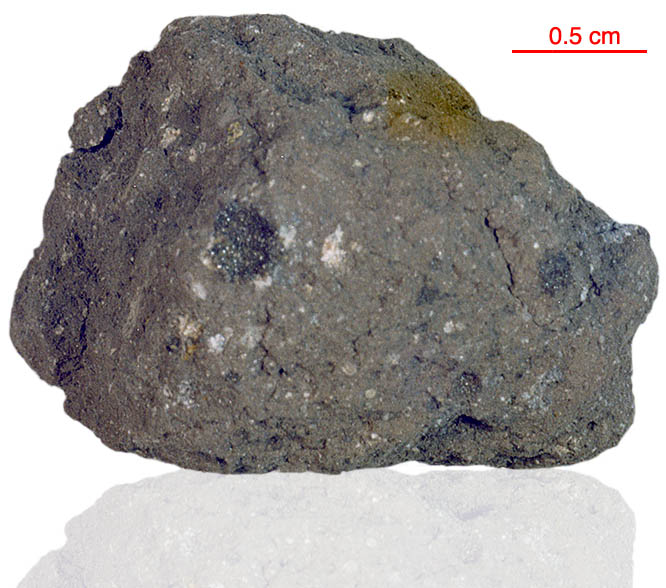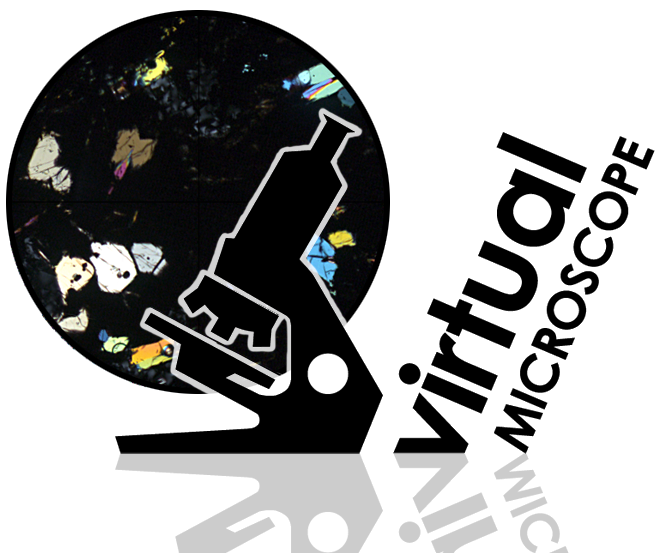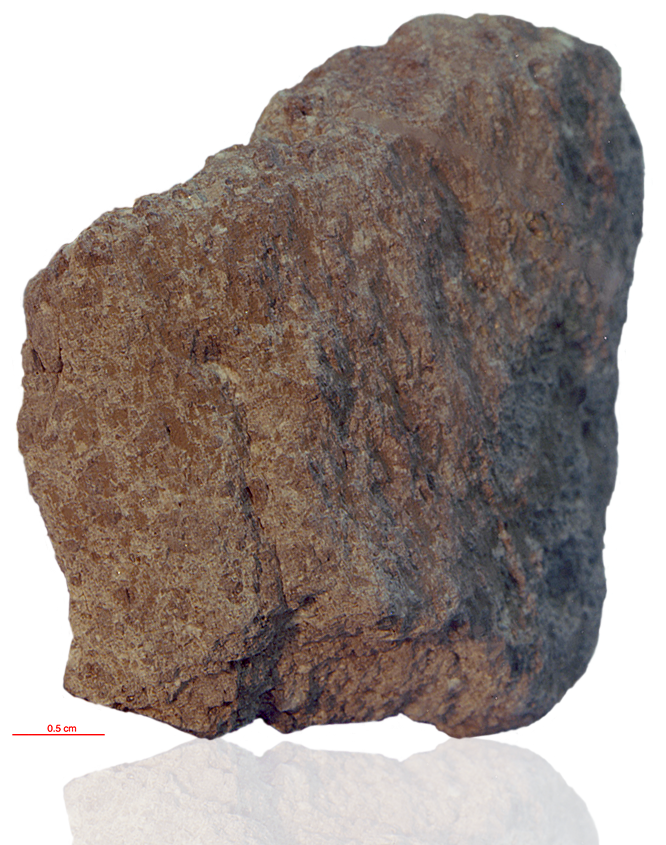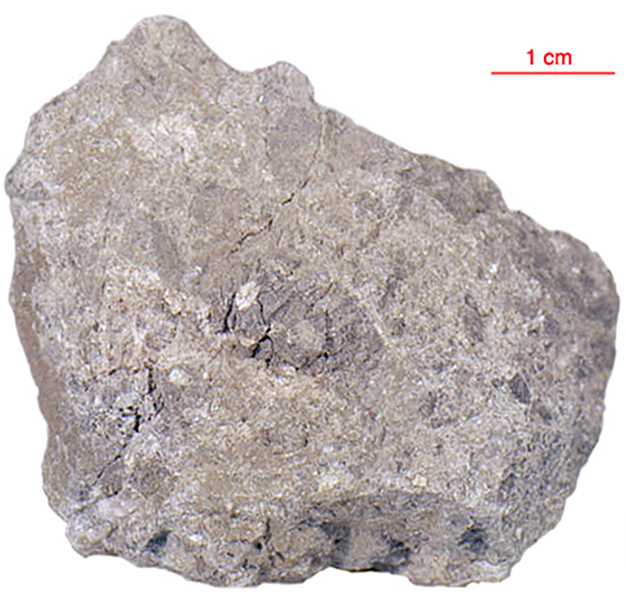
Fact sheet
Samples 14169-14175 were returned to Earth in the same bag. They have an identical lithology and may be parts of 14303 which was also stored in the same bag. This conclusion is, however, disputed. The samples all have a seriate fragmental clast population and seriate grain size distribution of the matrix. A number of the broken clasts appear to be basaltic. These small breccias samples haven’t been studied, perhaps because of the suggestion that they were part of 14303.
The sample weighed 37.79 grams before analysis. It has not been dated.
Further details of this and other Apollo samples are here: http://curator.jsc.nasa.gov/lunar/
The Apollo 14 landing site was in a region formed by impact-basin debris.
Most of the 42 kilograms of rocks and soil collected on Apollo 14 are breccias (rocks that are composed of fragments of other, older rocks). In some cases, the rock fragments that form a breccia are themselves breccias. Such rocks obviously have experienced complex histories with multiple generations of impact events. Some breccias were heated enough that some of the material in the rock was melted.
Apollo 14 was launched on 31 January 1971.

